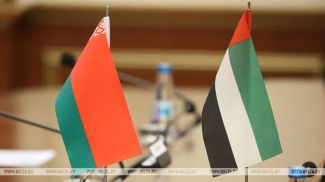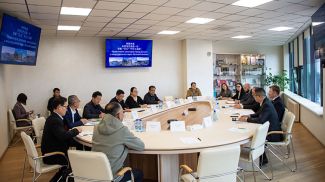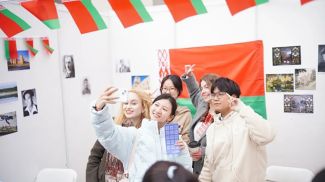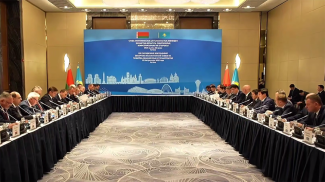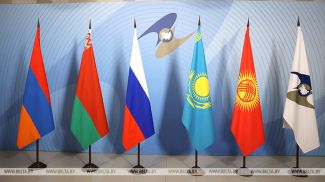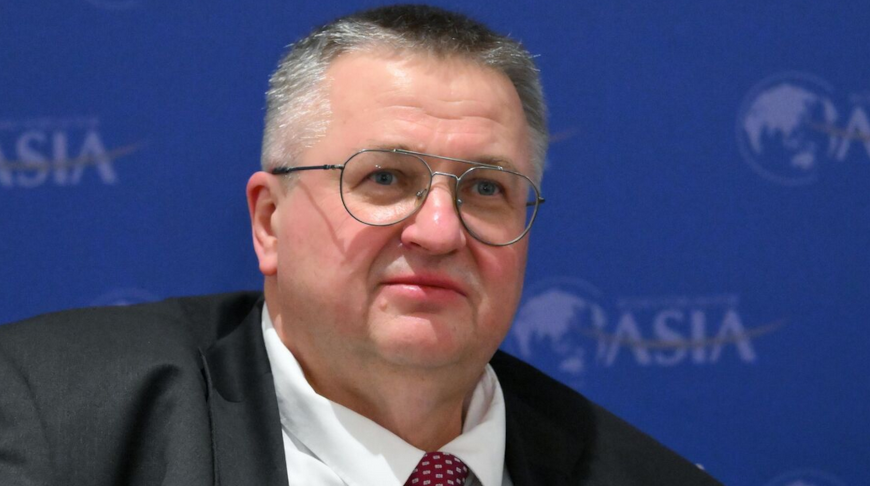
MOSCOW, 28 March (BelTA) - The Union State, the Eurasian Economic Union and the CIS can become the basis for the Greater Eurasian Partnership, Russian Deputy Prime Minister Alexey Overchuk said at the plenary session of the CIS International Economic Forum in Moscow on 28 March, BelTA learned.
Alexey Overchuk stated that integration in the post-Soviet space is multi-tiered. According to him, this reflects a respectful attitude to the readiness of individual countries to deepen bilateral and multilateral ties, to participate in the creation of supranational regulatory instruments and to assume the corresponding obligations.
“Here we are talking about the Union State, the Eurasian Economic Union and the Commonwealth of Independent States. Other integration projects that are formed around major economies and geographical regions of Eurasia include the Chinese Belt and Road Initiative, the Association of East Asian Nations, and the Cooperation Council of Arab States of the Persian Gulf. In turn, the sovereign states of Eurasia participate in such backbone structures as the SCO, and also BRICS and APEC beyond Eurasia,” Alexey Overchuk said.
“Obviously, it is these associations that may grow into international platforms that will work out joint solutions impacting the interests of integration entities forming around the major economies and geographical centers of Eurasia,” he believes.
“The consolidation of efforts of all participating states and integration entities will result in the Greater Eurasian Partnership, which in its essence will be the integration of integrations that will give impetus to sustainable development, socio-economic progress, new technologies, better transportation and logistics connectivity, and wider cultural and other ties between the peoples of Eurasia. This will necessitate aligning the integration projects on the basis of harmonization of regulatory requirements for financial markets, fair multilateral trade and investment, development of industrial cooperation and formation of sustainable international value chains, strengthening of a common contractual framework for food and energy security and environmental protection. The Greater Eurasian Partnership should be built in accordance with the principles of international law, respect for interests, consideration of regional and cultural specificities, levels of development of individual participants, and consensus-based decision-making. This is the spirit we manage to maintain within the framework of the Union State, EAEU and CIS, and therefore these associations can become an example for developing mechanisms of the Greater Eurasian Partnership.”
Alexey Overchuk stated that integration in the post-Soviet space is multi-tiered. According to him, this reflects a respectful attitude to the readiness of individual countries to deepen bilateral and multilateral ties, to participate in the creation of supranational regulatory instruments and to assume the corresponding obligations.
“Here we are talking about the Union State, the Eurasian Economic Union and the Commonwealth of Independent States. Other integration projects that are formed around major economies and geographical regions of Eurasia include the Chinese Belt and Road Initiative, the Association of East Asian Nations, and the Cooperation Council of Arab States of the Persian Gulf. In turn, the sovereign states of Eurasia participate in such backbone structures as the SCO, and also BRICS and APEC beyond Eurasia,” Alexey Overchuk said.
“Obviously, it is these associations that may grow into international platforms that will work out joint solutions impacting the interests of integration entities forming around the major economies and geographical centers of Eurasia,” he believes.
“The consolidation of efforts of all participating states and integration entities will result in the Greater Eurasian Partnership, which in its essence will be the integration of integrations that will give impetus to sustainable development, socio-economic progress, new technologies, better transportation and logistics connectivity, and wider cultural and other ties between the peoples of Eurasia. This will necessitate aligning the integration projects on the basis of harmonization of regulatory requirements for financial markets, fair multilateral trade and investment, development of industrial cooperation and formation of sustainable international value chains, strengthening of a common contractual framework for food and energy security and environmental protection. The Greater Eurasian Partnership should be built in accordance with the principles of international law, respect for interests, consideration of regional and cultural specificities, levels of development of individual participants, and consensus-based decision-making. This is the spirit we manage to maintain within the framework of the Union State, EAEU and CIS, and therefore these associations can become an example for developing mechanisms of the Greater Eurasian Partnership.”




